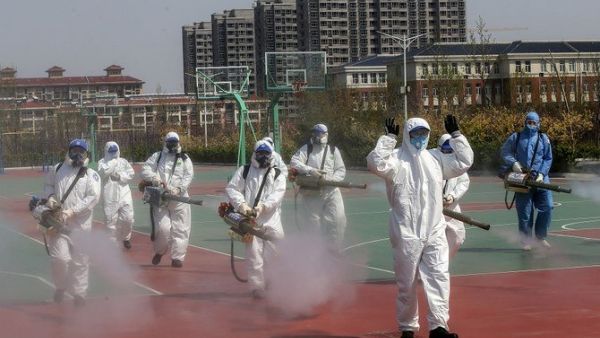In the Middle East, the official figures on the number of COVID-19 cases are being questioned. In Egypt, for example, a leaked military document and the high-profile deaths of two military officers have caused many to doubt whether the numbers being released from the government are accurate.
Such uncertainties, however, are not only to be found in the Middle East. In Europe, politicians and media outlets are at war over the true nature of the virus outbreak. The need to balance positive public opinions on government responses, mitigating the effects on the economy, whilst also justifying further lockdown and social distancing measures have meant that governments around the world are manipulating official statics.
In the UK it has been reported that the actual numbers of deaths from COVID-19 could be twice as high as the official statistics. Although the total number of coronavirus deaths stands at 22,351 the Financial Times has suggested that the actual figure could be as high as 47,000 according to their model. This is calculated by looking at the number of deaths above average for this time of the year.
Although the total number of coronavirus deaths stands at 22,351 the Financial Times has suggested that the actual figure could be as high as 47,000 according to their model.
Most of these deaths have occurred in care homes. In parts of Europe and the US, it’s common for the elderly to be put in institutional homes where they receive medical treatment and professional health care. Often separated from their families, the idea of having relatives in care is never an attractive thought but is often necessary due to sons and daughters living away from their home cities upon reaching adulthood.
The lack of accurate data is not only occurring in the UK. The New York Times has reported that at least 40,000 more people died in March, worldwide, than the official statistics indicated. Between March 9 and April 11, for example, Spain had an excess of 9,100 deaths when compared with the usual average number of mortalities outside of a pandemic. This would take, if correct, the actual number of COVID-19 deaths in the country during that period from 17,192 to 26,200.
Between March 9 and April 11, for example, Spain had an excess of 9,100 deaths when compared with the usual average number of mortalities outside of a pandemic.
But the seemingly inaccurate figures over the number of deaths from COVID-19 are not the only instance in which the UK government has appeared to mislead the public during the crisis. This week the BBC reported that the government had fiddled the numbers on personal protective equipment supplied to hospitals. Whilst publicly releasing figures that over half a billion gloves were provided to hospitals throughout the country, confidential documents have shown that the figure referred to individual gloves, rather than pairs. This would mean that the number would be half that put out by the UK government.
But sometimes information can be inaccurate whilst not being manipulated. For example, the amount of testing undertaken strongly affects the accuracy of the numbers of those infected. Therefore, it can often seem like the mortality rate is higher than the WHO’s estimation of around 3%. The fewer tests carried out means that there will be a greater proportion of confirmed cases compared with suspected and undetected.
“What you can safely say is that if you divide the number of reported deaths by the number of reported cases, you will almost certainly get the wrong answer,” John Edmunds, a professor at the London School of Hygiene & Tropical Medicine, has told Reuters.
There are, however, cases where misinformation has been spread deliberately and maliciously. The Reuters Institute at the University of Oxford has released a report on misinformation in the English language media. They found that the number of fact-checks rose by 900% between January and March 2020, as the virus spread across the world.
They found that the number of fact-checks rose by 900% between January and March 2020, as the virus spread across the world.
Only 20% of misinformation, whether completely fabricated or information that had been ‘spun’ to no longer resemble the truth, originated from top-down sources, such as governments or prominent public figures. Nevertheless, this accounted for 69% of social media engagements. This means that there is a tunnel of falsehoods arriving from the top of our societies to debase us with false information on the spread and seriousness of COVID-19.
Who stands to gain when falsehoods are told about this pandemic? In most cases, it’s the politicians and the newspapers that back them. A lower infection rate suggests better handling of the virus by governments. But when the dust starts to settle and the number of dead can be seen on the front pages of every newspaper in the world, will lies and manipulation be much of a defense against the truth?
The views expressed in this article do not necessarily reflect those of Al Bawaba News.









